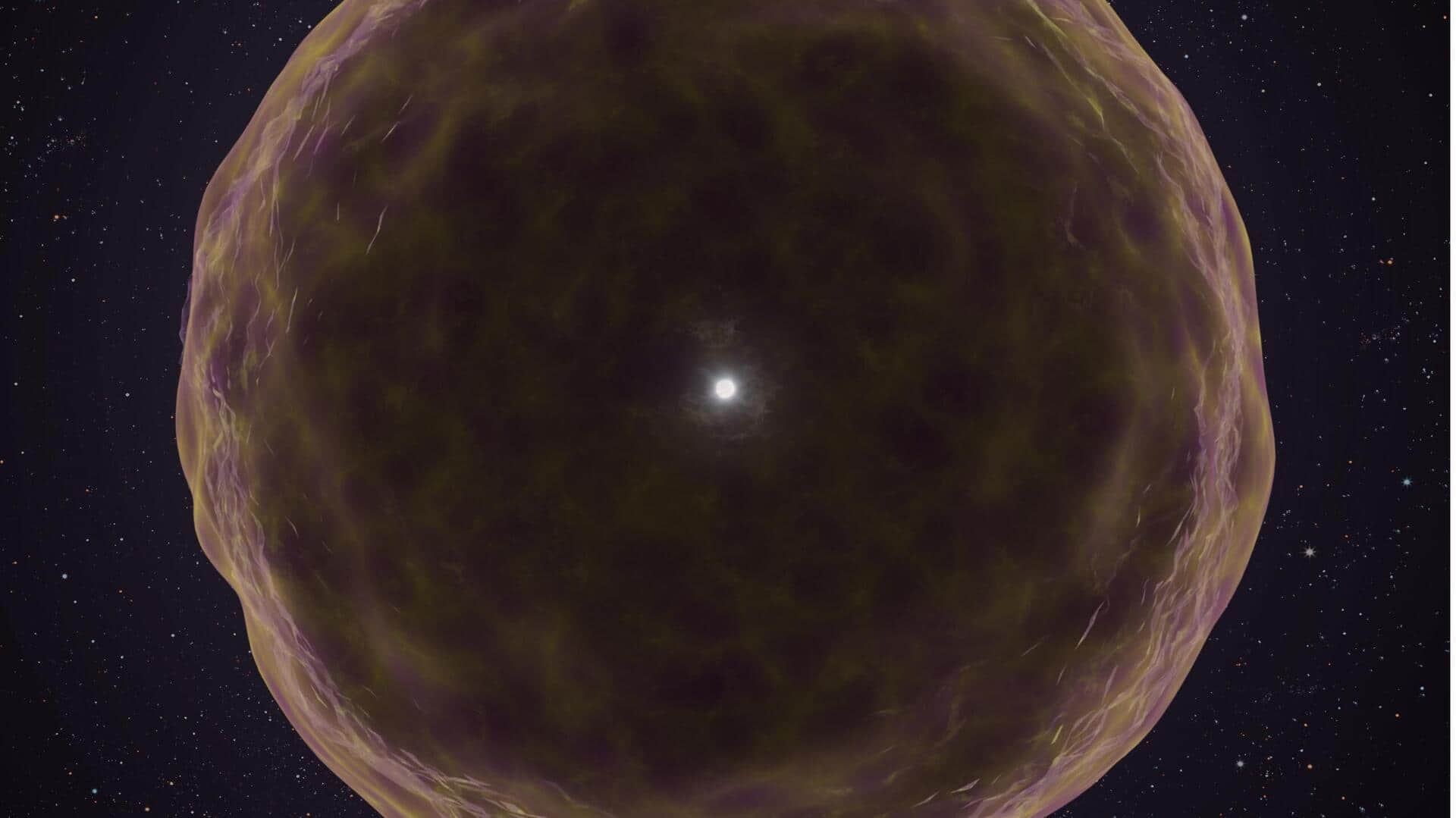
Watch: Rare supernova reveals the insides of a dying star
What's the story
A team of international scientists, led by Northwestern University astrophysicists, has discovered a unique type of supernova (exploding star) enriched with silicon, sulfur, and argon. The study was published in the journal Nature. The newly discovered supernova, dubbed SN2021yfj, defies conventional expectations as it lacks the typical light elements like hydrogen and helium usually found in such stellar explosions. The discovery of SN2021yfj provides direct evidence of the long-theorized inner layered structure of massive stars.
Structure
Evidence of onion-like structure
These stellar giants are thought to have an onion-like structure, with lighter elements on the outside and heavier ones toward the core. The observations suggest that this particular star lost its outer hydrogen, helium, and carbon layers before exploding, revealing its silicon and sulfur-rich interior.
Stellar evolution
Challenges existing theories of stellar evolution
The discovery of SN2021yfj also challenges existing theories of stellar evolution. Adam Miller, a senior author on the study, said this star is challenging our understanding of how stars evolve. It hints at more exotic pathways for a massive star's death that we hadn't considered before. This supernova has shed light on the complex processes at play in the life and death of massive stars.
Discovery
Discovered using Zwicky Transient Facility
The team discovered SN2021yfj in September 2021, using Northwestern's access to the Zwicky Transient Facility (ZTF). Located east of San Diego, ZTF uses a wide-field camera to scan the entire visible night sky. The supernova's spectrum revealed strong signals of silicon, sulfur, and argon instead of the typical helium, carbon, and oxygen found in other stripped supernovae.
Theories
Several scenarios considered for unique explosion
The exact cause of SN2021yfj's unique explosion is still unknown. However, Schulze and Miller theorize that a rare and powerful process could be behind it. They are considering many scenarios including interactions with a possible companion star, a massive pre-supernova eruption or even unusually strong stellar winds. The most likely explanation is that this supernova resulted from a massive star literally tearing itself apart under its own gravity.